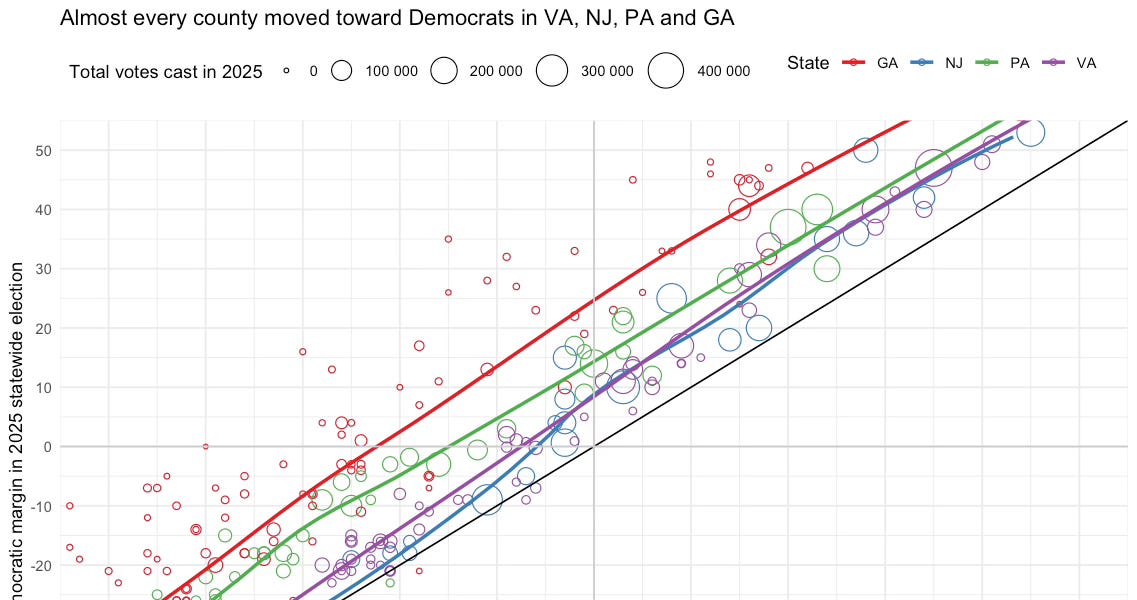- cross-posted to:
- [email protected]
- cross-posted to:
- [email protected]
The headline story from this year’s elections is simple: Democrats increased their support across the country and swept all the marquee contests in key states. Democratic Governor-elect Abigail Spanberger won Virginia by ~14 points, while Mikie Sherrill kept New Jersey blue by a double-digit margin. Georgia delivered two more statewide wins for Democrats, flipping both Public Service Commission seats for the first time in recent memory, and Pennsylvania elected a new Democratic lower-court judge (while keeping all its existing Supreme Court Democrats). And a socialist is now mayor of New York City.
These results point to an environment that’s significantly friendlier to Democrats than most pre‑election polls and the “vibes” suggested. An early forecast for the 2026 midterms — based on the historical predictive power of Virginia’s governor elections — suggests a national environment that looks something like D+8 to D+9, compared to the D+3 to D+4 in polls today.
None of this, however, was inevitable. The result of these elections was not merely a “thermostatic” backlash to the president. First, because the swings were larger than on average (16 points in VA since 2021, e.g.; 9 versus 2024). And second, because of the changing issue landscape powering Democrats’ victory. Voters said they punished Republicans for Trump’s policies on the economy, health care, and immigration. More said they were voting against him than voting for either party’s nominees for governor, according to the exits.
Instead, the best explanation for 2025 is that voters didn’t know what they were getting with Trump 2.0 last November, but now they do — and they don’t like it.
The following analysis of results and the exit polls explores seven stories hiding in the Democrats’ rosy performance. Charts of results show the scale of the Democratic victories. The exits show that voters prioritized affordability and the economy, and acted on their near-historic disapproval of the president. That combination powered wins across key geographies and demographic groups, blunting GOP efforts to fight on immigration, transgender kids, and crime. In Virginia and New Jersey, “economy‑first” voters sided with the Democratic gubernatorial candidates by a 65-35 margin — a sharp reversal from 2024, when economy‑focused voters broke roughly 80–20 for Trump.



Or that he already crashed the economy during his first term, jfc